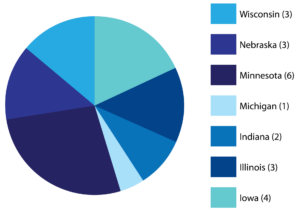
The launch of FedNow has bankers across the country considering the potential benefits it could have on their institution and customers. However, many questions remain around the processes and technology required to successfully implement the updated payments infrastructure, as well as how it fits into a bank’s overall strategy.
There are many potential advantages to implementing FedNow. For example, it could significantly impact small business banking. Many bankers have turned their attention to small businesses as the battle for deposits continues, determining how to acquire these relationships and better serve this critical segment. Payments play an essential role when it comes to attracting and retaining small businesses, since one of this group’s most pervasive pain points is optimizing how to pay and get paid. With FedNow, banks could help small businesses improve cash flow, creating a competitive differentiator.
The adoption of FedNow also sets the stage for banks to more quickly take advantage of future innovations associated with this new payments system rail. There is likely to be a new cohort of fintechs focused on how they can leverage FedNow to provide new, compelling payments offerings to banks. Those who embrace FedNow early will be well poised to act swiftly and deliver new functionality to customers.
However, it’s important to recognize that FedNow will not be right for every institution. When a bank is evaluating if they should pursue FedNow or not, first consider if the use cases are there. Does the institution have the volume of business customers for this investment to make sense? If not, the resources are likely best spent elsewhere.
The technology implications must also be considered as a factor. Does the bank have the expertise and resources to integrate into the rails and conduct a proper implementation? While many vendors are offering off-the-shelf solutions, a significant lift is still required by the institution and its staff.
Next, think about the deployment of capital. Does the institution have enough capital to set aside to instantly move money with confidence? The Silicon Valley Bank crisis earlier this spring demonstrated just how important this consideration is. Instant payments make it more difficult to maintain proper risk controls and optimize cash-flow management.
Perhaps most notable is the operational concern of implementing FedNow. After all, real-time payments mean real-time fraud. There will be many steps a bank has to take to stay on top of increased risk, including educating users on red flags to watch out for.
For those who have taken these points into consideration and decide to move forward, many are tapping strategic implementation partners to help them effectively integrate into the rails while enhancing compliance. Some of these partners even have the expertise to help customize payment experiences for business customers, helping banks optimize the integration.
A bank’s implementation roadmap must also be carefully crafted. Many institutions are choosing to first implement receive-only capabilities for FedNow to mitigate the risk of fraud. Such a strategy enables these institutions to learn from those first users, only launching send capabilities once the market demand is higher. However, such a plan limits the first-mover advantage.
As another strategic option, some institutions are combining real-time payments and banking-as-a-service initiatives, whereby RTP becomes the first feature of — and is integrated into — their BaaS layer. This creates a differentiator for the financial institution to fintech partners and enables them to reduce the risk of the investment for two strategic opportunities.
While the industry continues to buzz with differing opinions surrounding FedNow, a universal truth is that it should be approached carefully and strategically. After all, this isn’t just something for technical staff to manage; there must be compliance buy in as well. The institutions that thoroughly evaluate the business case for FedNow and take proper steps to implement the modernized payments structure effectively will be well poised to carve out a competitive advantage while delivering new value to customers.
Kristiane Mandraki is VP of Growth for Praxent, a fintech product agency with more than two decades of experience.
